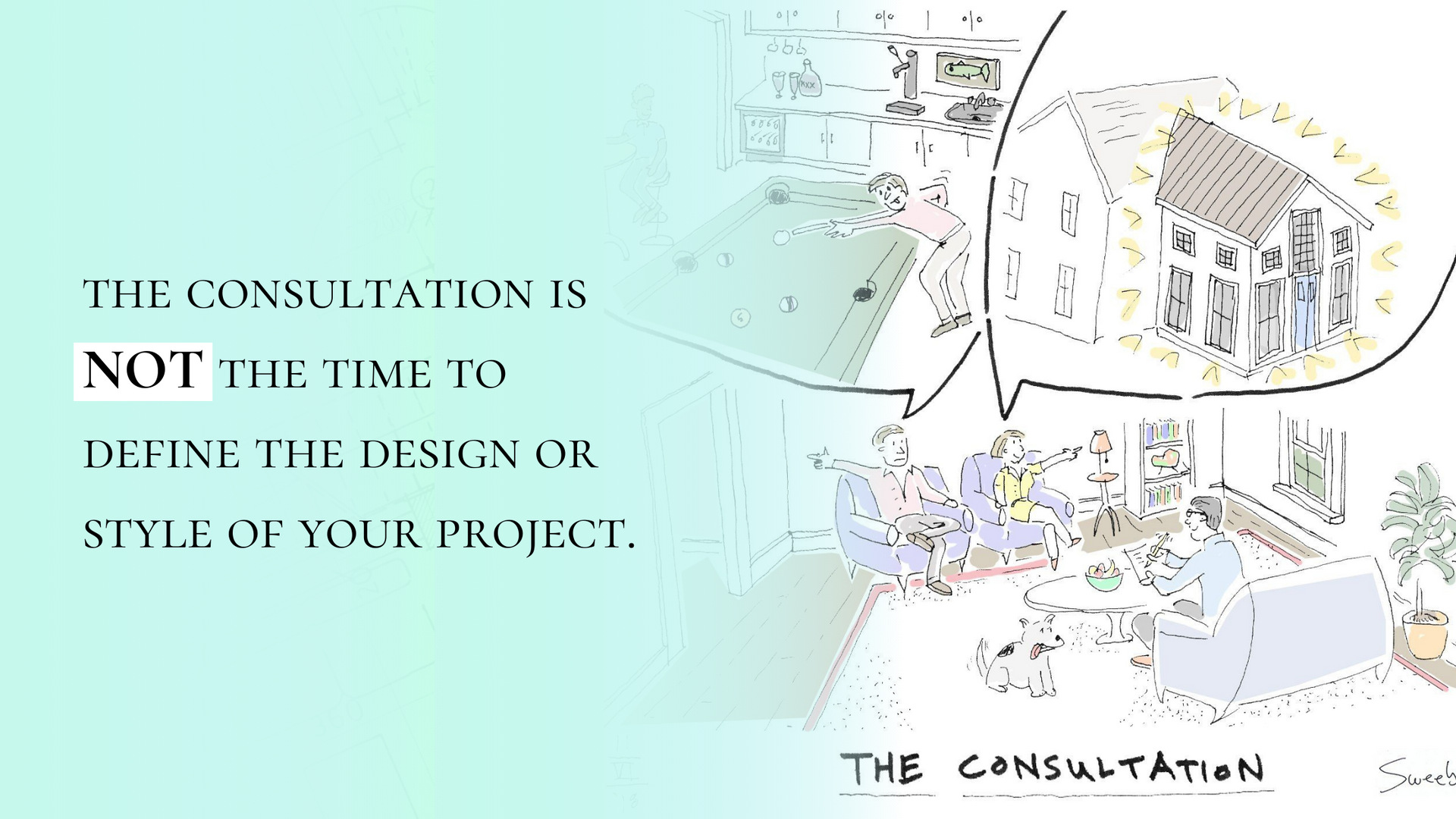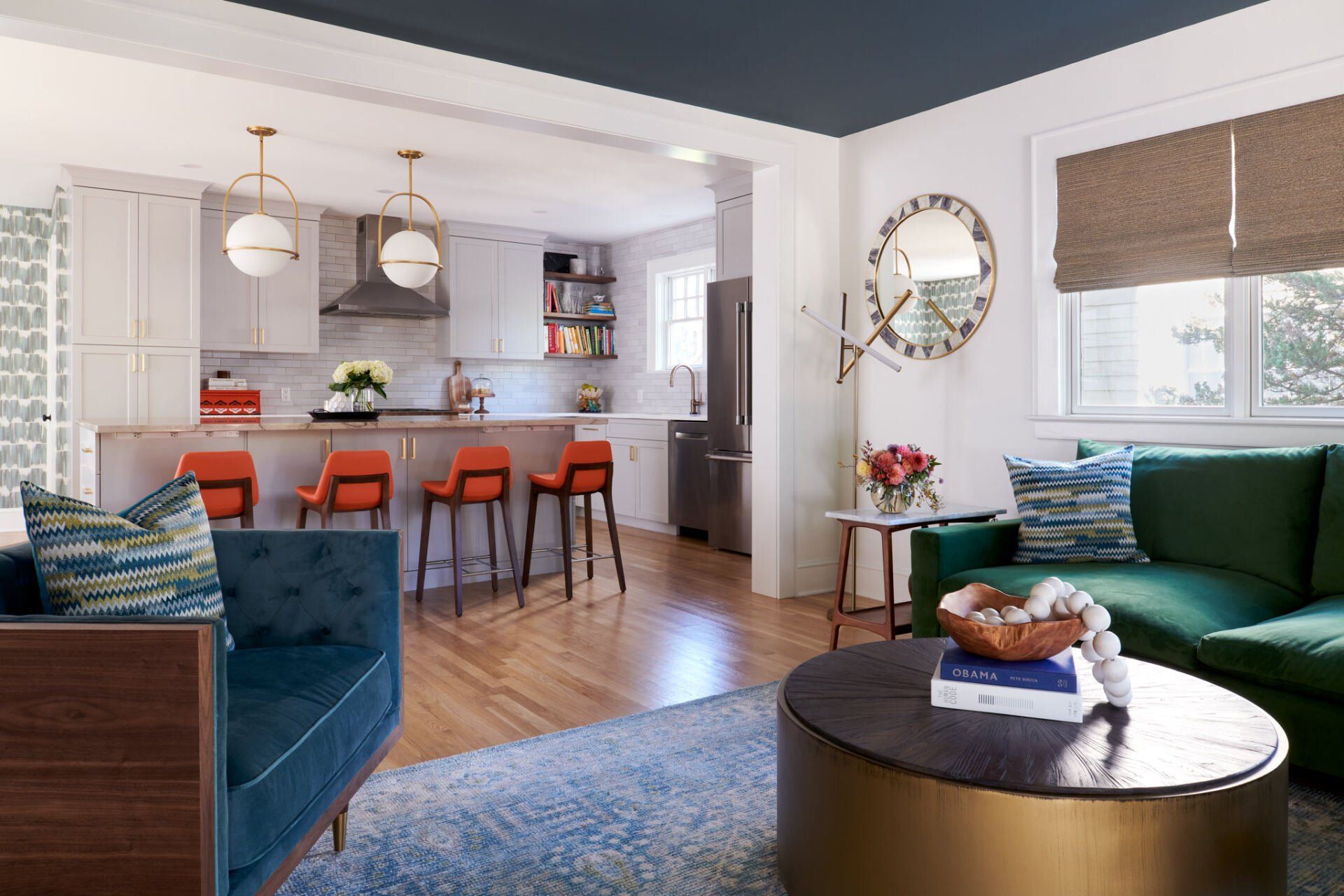During an architect’s consultation, you have a chance to tell an architect about your needs, wants, and goals. It’s also the time to air your complaints about your property!
This is your time to decide if you can entrust the architect with your home improvement project.
But what should you look for during a consultation? How would you know if you are talking to a good architect or an unqualified one?
We’ve put together 5 red flags to look out for in your architect’s performance and ensure your final project is one that doesn’t just meet your expectations — it exceeds them!
You Sense They Aren’t Listening to You
First and foremost, one of the biggest red flags during a consultation is if you feel like the architect isn’t listening to you.
Here are 3 key clues that your architect isn’t listening to what you have to say.
They provide design solutions during the consultation
A telltale sign that your architect isn’t as professional as you think is when they rush into presenting design solutions during the initial consultation.
This impulsive approach usually indicates a lack of the capacity to inquire and fully understand your needs before crafting design recommendations.
They don’t supply you with three critical documents
During the consultation stages for your home project, an experienced architect should be able to provide you with three important documents.
- A comprehensive list of requested improvements, usually in the form of an inventory of spaces that will be part of the project.
- A ‘ballpark’ construction cost estimate, normally provided through line-item cost breakdown for each of the improvements/spaces you are requesting. (Note: this is not the cost of the architect’s services, it is the cost of the materials and labor to build your project.)
- A detailed written description of the architect's services, fees, and rough project timeline. This is normally provided as a Proposal Agreement, Contract Agreement, or a Proposal Contract Agreement.
Not receiving any of these documents through the consultation process should be a red flag for you. Together, these three documents ensure transparency and set clear expectations for the start of the design process.
They aren’t effective communicators
Open and effective communication is a key component of any successful residential project.
If at any point before, during, or after the initial meeting, you are left feeling confused or not in charge of your own project, take that as a big red flag!
Even before you hire one, a good architect should be clear and consistent with their communication. If they aren’t keeping you in the loop now, that might not change once you start paying them money.
The Project Brief Isn’t Detailed Enough
A carefully crafted project brief is essential for determining the success of your architectural project. From concept to completion, the brief will serve as a vision statement. You and your architect will rely on the brief, as your north star, to ensure clarity on your desired design solutions.
Additionally, the project brief will be an integral part of helping you keep applications such as planning permission and zoning approvals on track.
This is why as part of a detailed project brief, the following information should be present:
- The desired features or improvements requested
- The specific areas included in the project
- The functional goals and requirements (including lifestyle considerations)
- Project budget and constraints
- Timeline expectations
Tip: As part of the construction permit phase, your architect should be able to prepare drawings and amend them upon request. If you notice that your architect isn’t adding enough detail to your project brief, it’s likely that their final project drawings will also lack detail.
The Architect is Focused on Advancing Their Own Profile

A meaningful relationship with your architect is one that should always extend beyond creative suggestions and involve seeking out a better understanding of you and your property's distinct needs.
While it can be good for an architect to want to showcase the highest levels of innovation and create designs that pave the way for the evolution of the architecture field, these design decisions should always be in keeping with your property’s needs.
To ensure your architect isn’t just using your project to expand their portfolio, look for an architect with:
- Experience: Seek out architects with a proven track record of projects that match your needs. To do this, be sure to carefully review their portfolio and references.
- A client-centric approach: Prioritize architects who listen to you, incorporate your input, and align with your preferences.
- Value collaboration: Opt for architects who view the building process as a partnership, embracing your feedback and adjusting designs accordingly.
- Can provide design rationale: Choose architects who can explain how their choices align with your goals.
- Uphold ethical standards: Look for architects who uphold industry standards and progressive values across their services.
- Are detail-oriented: Architects committed to the finer details are more committed to delivering a final design that caters to your needs.
Your Budget Isn’t Being Respected
Even though custom building projects and remodels can be unpredictable at the best of times, it’s still important for your budget to be respected throughout your build.
To ensure this is the case, an architect should be open to answering questions during all project development stages regarding:
- The projected cost of labor
- Materials costs (and justification for certain types of materials being used)
- Contingency planning
- Value engineering (i.e. discussing potential ways to optimize costs without compromising on quality)
- Cost-effective alternatives (on request)
The Architect Steers the Bulk of the Conversation toward Aesthetics

The consultation should be all about understanding your needs and challenges with your current house.
A quality architect really can’t (and shouldn’t) state what the finished design will look like at this point. That will come when you hire the architect and design begins.
If during your first meeting with an architect, they spend more time describing what the project might look like instead of understanding your needs and problems, it could indicate a lack of focus on your specific requirements.
This is worth repeating: the consultation is NOT the time to define the design or style of your project. Design development occurs after you hire the architect. Fight the urge during the consultation to tell the architect what your project should look like when construction is completed. Your task during the consultation is to make sure the architect understands what you need in order to improve your property, so you can live better!
As for ensuring the architect with whom you are consulting can deliver a final design that is satisfying to you, you should have a general idea of the types of projects an architect has worked on from their portfolio and from contacting their references. Most architects will have their portfolio of past projects on their website.
5 Green Flags to Help You Feel Confident Starting Your Project

A comprehensive project brief, a deep understanding of your property's needs, transparency, likely funding requirements for your build or remodel, and a focus on your needs are all critical elements of a successful project.
Any architect who doesn’t take those things seriously during the consultation and throughout the whole project process risks your dream home.
We hope this article has helped you be more prepared for any consultation you book with architects to discuss your potential project.
Apply for your discovery consultation with us and kick start a journey with the professionals who value your vision. You can view our portfolio to learn more about our past projects.
Website design by Archmark


